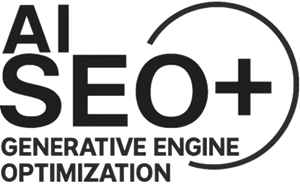AI Content vs Human Content on Social Media: Which Wins?

What is AI-Generated Content?
AI-generated content refers to any media — text, images, video, or audio — created using artificial intelligence tools. These tools include:
- Text: ChatGPT, Jasper, Copy.ai
- Images: MidJourney, DALL·E, Adobe Firefly
- Videos: Pictory, Runway ML, Lumen5
- Audio: ElevenLabs, Murf AI
These platforms use machine learning and natural language processing (NLP) to generate content based on prompts, trends, and historical data.
What is Human-Crafted Content?
Human content is created manually by social media managers, content creators, copywriters, designers, and videographers. It involves creativity, storytelling, emotional insight, and often a personal touch based on lived experiences.
Comparison Table: AI vs Human Content
| Criteria | AI Content | Human Content |
|---|---|---|
| Speed | Instant output, scalable | Slower, depends on team availability |
| Cost | Low (once tools are set) | Higher (especially for design and video) |
| Emotional Impact | Still limited, can feel generic | Deep emotional and cultural resonance |
| Trend Adaptation | Excellent for real-time trends and analysis | Depends on team’s awareness |
| Brand Voice | Needs fine-tuning or prompt engineering | Naturally consistent with voice/tone |
| Engagement Quality | High for informative, short-form content | Higher for storytelling and community building |
What the Data Says in 2025–26
According to a recent industry study involving 1,500 social media campaigns from brands across the US and India, here’s how AI and human content performed:
- AI-generated content had a 35% higher output rate with 22% more publishing frequency
- Human-created content drove 29% more shares and 15% more comments per post
- Blended content (AI + human-edited) performed the best with a 48% increase in click-throughs and better audience retention
This means that while AI is excellent for scale and speed, human creativity still drives emotional engagement and connection — especially for brand storytelling and campaign anchoring.
AI Content: Best Use Cases
1. Daily Content Calendars
Use AI to generate:
- Captions for reels, tweets, and LinkedIn posts
- Quick tips, hacks, or quote cards
- Holiday greetings and announcements
2. Content Repurposing
Turn blogs into carousels or extract stats for infographics — all AI can handle in seconds.
3. Translation and Localization
AI tools like DeepL and Google Translate (with brand voice prompts) help global brands localize posts accurately.
Human Content: Best Use Cases
1. Founder or Brand Voice Posts
LinkedIn stories, behind-the-scenes videos, and opinion posts need human touch for credibility and tone.
2. Emotional Campaigns
Awareness campaigns (e.g., mental health, social causes) perform better with authentic human insight and storytelling.
3. Real-Time Community Engagement
Replying to comments, addressing concerns, and participating in trends needs human personality and empathy.
AI + Human: The Hybrid Strategy That Wins
The smartest brands in 2025–26 don’t choose between AI or human — they combine both.
How to Blend Them:
- Use AI for the first draft, then have a human refine it
- Create 80% scalable AI content and 20% high-impact human-led content
- Use AI to generate visual ideas, then design final creatives manually
This approach ensures speed, quality, and emotional depth — the trifecta of modern social content.
Real Examples
✔ Fitness Brand on Instagram:
- Uses ChatGPT to generate 30-day caption calendar
- Designs templates in Canva using AI layout suggestions
- Founder films raw stories and replies to DMs manually
✔ SaaS Startup on LinkedIn:
- Uses AI to turn case studies into carousel posts
- Writes technical summaries manually for thought leadership
Challenges and Limitations of AI
- AI may lack cultural nuance or local humor
- Can produce repetitive or templated-sounding captions
- Requires training on your brand tone and persona
Tips to Make AI Content Feel More Human
- Add emojis, line breaks, and questions to drive engagement
- Use your own examples or case studies in prompts
- Always edit AI content for tone, accuracy, and uniqueness
What Will Win in 2026?
The future will favor brands that can combine:
- AI scale to dominate attention spans
- Human creativity to build trust and brand love
Audiences are smarter than ever — they crave real voices but won’t wait for slow content. Brands need to deliver consistently while staying authentic. AI can help, but it needs human hands to shape the final message.
The Answer Is Not Either/Or — It’s And
AI content wins in speed, scale, and experimentation.
Human content wins in emotion, relatability, and brand trust.
The ultimate winner? Brands that blend both strategically to serve their audience better, faster, and more personally than ever before.
Whether you’re building a global campaign or just launching your personal brand, the smartest move in 2025–26 is to master both sides — because social media is no longer just creative, it’s intelligent too.
